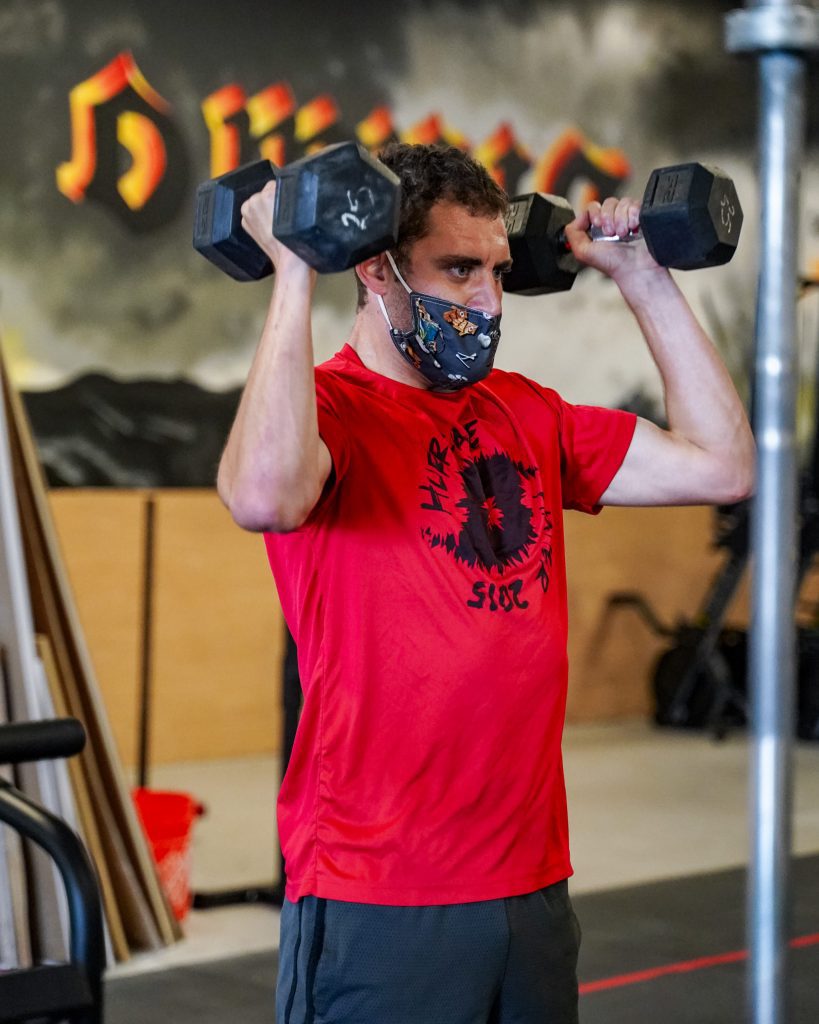
What comes to mind when you read the phrase: “Your best is never enough, unless it’s always enough”?
I heard this recently and it’s been quite thought provoking for me. I have come to the personal belief that anything worth doing, is worth doing well. To me it is about holding yourself accountable and being all in, all the time. Because you can’t half ass your way to success. If you want to do extraordinary things with your life, then you have to show up even when you don’t feel your best.
This then begs the question: what is your “best” and how can that be measured? We all have ups and downs, which means your best can vary. This is normal and a key component to understand in preventing burnout and continuing to progress. Your “best” is relative on any given day. Meaning that giving your best every day does not mean 100% each day, it means 100% of your effort.
Training At Your Best
Now let’s talk about training. If you are reading this then I would bet all my money that you take you training seriously and have a goal you are chasing. So how do you modify (if at all) your program when life gets hard, you become stressed or are feeling sub par?
It’s likely you fall into one of the following categories when life gets in the way:
- You fall off the wagon and just stop working out completely. You skip the gym entirely and resort to bad habits. Leading to a lack of consistency in your training as you ebb and flow between working out wholeheartedly or not at all. There is no middle ground.
- You push through fatigue and exhaustion by following the prescribed program regardless of the circumstance. This usually leads to burnout, injuries or both. Resulting in a lack of consistency and derailing progress when you really need to recover.
HOW TO ADJUST TRAINING
I’m sure you can relate to one of the above scenarios or perhaps even both. Well here’s the good news, there is a door number 3! Behind this door lies what is known as “Auto-regulatory Training”. The simple principle behind this training methodology is that we take into account everything. Including how we feel, our sleep, nutrition and what our given “best” can be from day to day. Remember it’s your best effort today, not your all time best.
Just because modern society is taking a “win or lose” approach to training doesn’t mean you do too. This training gives us some grace when we don’t have a full tank or ability to train. Understanding the effort level you have available can change your approach training from day to day.
EXHIBIT A
Let’s say it’s Monday and you got the best sleep of your life last night. Life is good and stress free. You have an extra hour of time in your schedule today. The programming calls for heavy singles on back squats and you are motivated to put in the work. Well today is the day to get after it, blast the music and hit those heavy numbers. You may even want to stick around and get in that extra accessory you never seem to “feel” like doing.
EXHBIT B
On the other hand, let’s say you are feeling under the weather, working extra shifts and studying for your licensing exams on the weekend. Poor sleep, bad eating and stress through the roof. You still have an hour to get to the gym and want to go because it is your happy place. However, you just don’t have the motivation to load up the heavy bar and push through some grueling bike intervals.
It is likely, two thoughts are going through your head as mentioned before: 1) skip the gym completely or 2) follow the program no matter how you feel. Instead let’s consider option 3) hit some light percentage work to feel the bar, focus on technique and moving well. Then modify your conditioning to something that makes you “feel” better than when you walked in. This could look like doing Fitness when you normally do the Performance programming. Or it could even be changing out a movement completely for today.
The basic idea is training does not have to be an “all or nothing” approach. By listening to your body you will see better results. In fact you can actually organize your program design in a way that is auto-regulatory without you having to make a decision.
FINAL THOUGHTS
It’s time to work smarter, not harder. To get where you want to go in 1 year, 3 years or 5 years becomes about having a low trajectory on a distant horizon. One day will not throw you off that trajectory. What will derail you is 4 months of injury from overtraining.
I hope this gets you to reconsider your training, and with a few extra tools to better attack your training for the long haul. And as always if you have questions ASK YOUR COACH! We are here to help you modify to get the best workout each and every day!
-Coach Taylor
